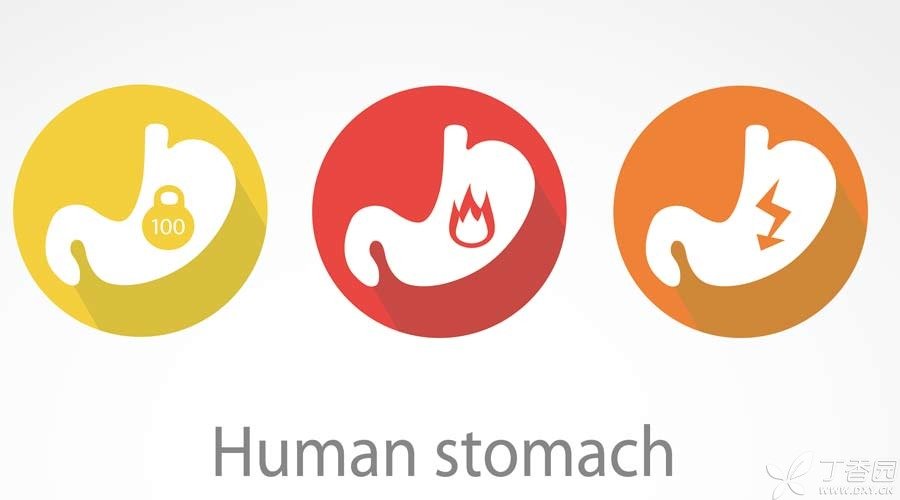
China and neighboring South Korea and Japan are all areas with high incidence of gastric cancer. The current situation of gastric cancer in China is high incidence, but the early diagnosis rate is low and the survival prognosis is poor.
The incidence of gastric cancer remains high. At the same time, more and more people around us suffer from stomach diseases, so [gastroscope] has been well known by the broad masses of the people.
But do you really know about gastroscopy?
The so-called gastroscope, in short, is a fiber hose with a camera. During the examination, through the mouth or nose fiber hose into the digestive tract, doctors can observe the mucosa on the surface of esophagus, stomach and duodenum through this to help doctors understand whether there are ulcers, mass bulges and varicose blood vessels in the digestive tract.
What does gastroscopy need to pay attention to?
Many people are scared to [turn pale at the mention of gastroscopy] when they hear that gastroscopy is extremely uncomfortable. Indeed, there may be varying degrees of nausea, upper abdominal traction and distending pain during gastroscopy. In fact, there is no need to be too nervous, just keep relaxed and cooperate according to what the doctor said.
Moreover, with the promotion and popularization of gastroscope and the appearance of new transnasal gastroscope, the uncomfortable feeling during examination has been greatly reduced, and the vast majority of people can accept gastroscope operation. Of course, if patients are sensitive to pain, fear of operation and intolerance to ordinary gastroscope, they can choose painless gastroscope under intravenous anesthesia.
Before checking, you need to know:
- If the inspection is arranged in the morning, do not eat after dinner the day before the inspection. If the inspection is scheduled in the afternoon, Breakfast can eat liquid or less dregs food, lunch fast. Liquid food specifically refers to: various soups, light porridge, meat porridge and vegetable porridge are counted. Less dregs diet: refers to avoid foods containing more cellulose, such as celery in vegetables, coarse grains or foods that are too hard. The elderly and infirm can maintain energy intravenously or by drinking glucose. If painless gastroscope is selected, it is recommended not to drink water 4 ~ 6 hours in advance, and anesthesia visit and evaluation should be completed before operation. Smokers should stop smoking at least one day before the examination. For people with movable dentures, the dentures should be removed before examination.
After checking, you need to know:
- After the examination is completed, you may feel abdominal distension, pain, discomfort of something in your stomach and hiccups in the early stage. However, don’t worry too much. Under normal circumstances, these symptoms will gradually ease. After the examination, you will rest and observe in the hospital for about half an hour before leaving. Biopsy patients should try their best to give priority to liquid diet in the early stage to avoid irritating food. Endoscopic treatment (polypectomy, mass removal, vascular ligation) may require a period of time after completion of which one cannot eat. At present, most elderly patients need to follow the doctor’s advice for hospitalization.
Who needs gastroscopy?
Let’s take a comparative look. If there are any of the following circumstances, it is recommended to go to a regular hospital for gastroscopy:
-
Regular difficulty in swallowing, upper abdominal pain, incessant hiccups, acid regurgitation, obvious fullness;
-
Hematemesis of unknown cause, black stool and abdominal pain of unknown cause (repeated pain and unclear location), combined with medical history, it is suggested that gastrointestinal endoscopy can be considered for examination together.
-
Patients with liver cirrhosis and other diseases need to be evaluated for complications such as esophagus and gastric fundus.
-
Patients who need regular follow-up after surgery for upper gastrointestinal tumors such as gastric cancer and esophageal cancer;
-
High-risk groups for gastric cancer: patients with immediate family members who have suffered from gastric cancer and whose previous examinations show high-risk factors need regular gastroscopy in order to find early gastric cancer in time;
-
Gastric cancer screening in healthy people: Current guidelines and related studies believe that gastroscopy can increase the diagnosis of gastric cancer, but does not reduce the death caused by gastric cancer. Japan has also not recommended it as a mass gastric cancer screening program. As far as individuals are concerned, they need to combine symptoms, economic conditions, psychological acceptance and other comprehensive decisions.

How do you view gastroscopy report?
Generally, the gastroscope report can be obtained soon after gastroscope, but attention should be paid to whether tissue biopsy is carried out.
Whether to biopsy is judged by the operating doctor in combination with clinical experience. Generally, biopsies of suspicious tissues are taken for tissue examination to judge the nature.
If there is no biopsy, regardless of the degree described in the report, it is different manifestations of inflammation. Doctors will decide whether to treat or not and the treatment plan according to the symptoms, whether there is Helicobacter pylori infection and the degree. There is no need to worry too much.
If there is biopsy, it is recommended to judge and see a doctor together with histopathological report. If the histopathological report shows cancer, you should immediately go to a regular hospital to improve examination and evaluation for further diagnosis and treatment.
If the report shows all kinds of gastritis, such words as [acute and chronic mucosal inflammation] [chronic superficial gastritis] [atrophic gastritis] and [intestinal metaplasia, low to moderate atypical hyperplasia] will appear on the report:
- The first three should be combined with symptoms, whether there is Helicobacter pylori infection and the degree to determine the treatment plan. Common inflammation is mostly recoverable, Atrophic inflammation can be controlled or partially relieved (atrophic gastritis may be normal for some elderly people). Intestinal metaplasia is an additional change based on atrophic gastritis and needs attention. However, like low to moderate atypical hyperplasia, there is no need to worry too much or repeat gastroscopy in a short period of time. Regular review is recommended.
In short, the body should pay more attention to itself, do not fear gastroscopy too much and worry about physical discomfort, at the same time, do not take changes in its own physical condition lightly, treat gastrointestinal endoscopy and gastrointestinal diseases scientifically and rationally, and correctly recognize examination and diseases.
